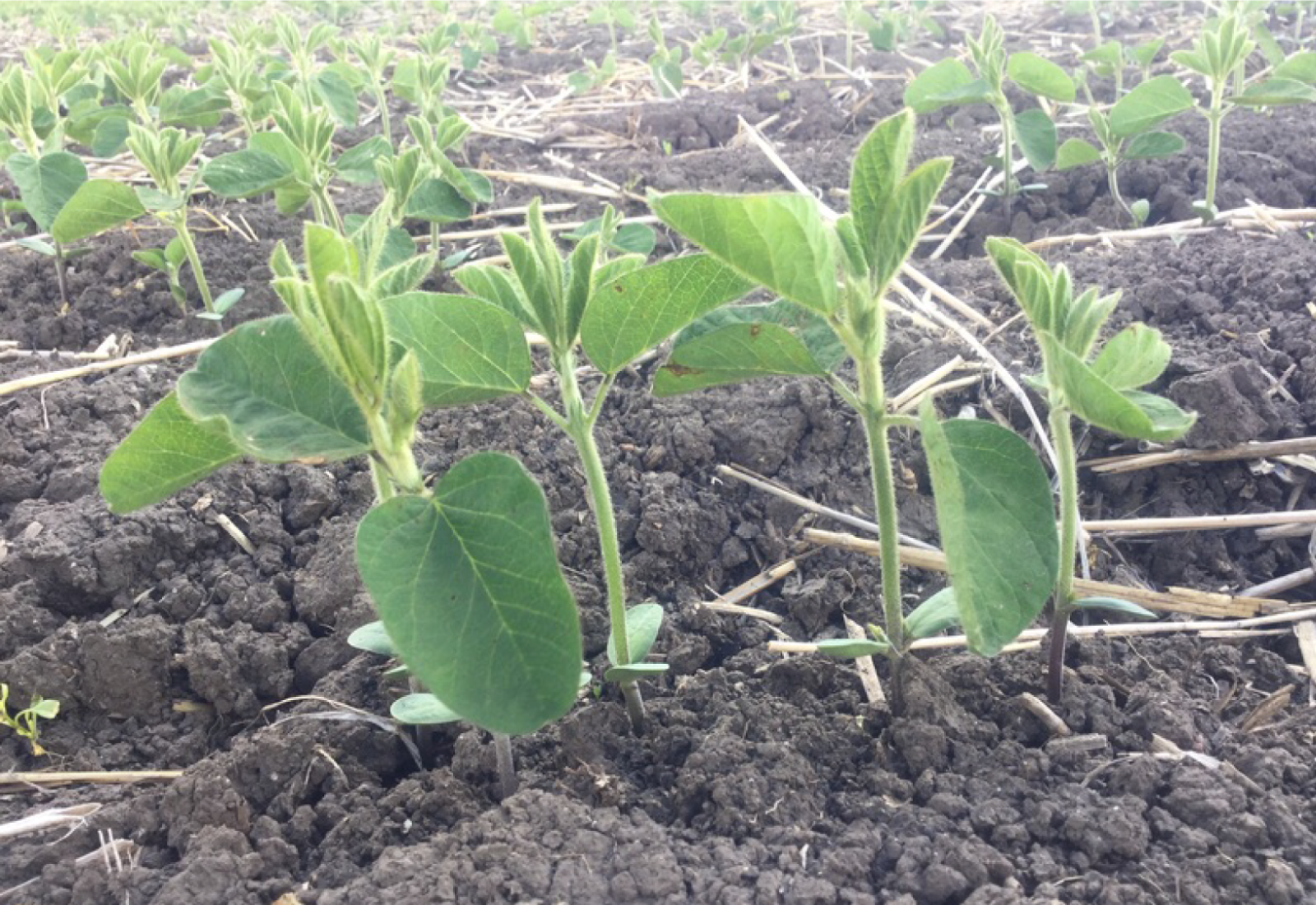Soybeans in June: An Emerging Issue

By Geoff Geddes
When you know what to look for, it’s that much easier to find it. So, when you’re walking the fields this June, it’s wise to keep some key things in mind and let your eyes be your guide.
“As far as germination goes, if you get a good 48-hour window after planting with no rain, soybeans will germinate quite quickly and should emerge from the ground within 6 to 16 days,” said Ashley Klassen, Sales Agronomist at Richardson International in Lamont, Alberta. “Once they’re out, your beans won’t take long to get to the unifoliate stage and progress from there.”
Staying on an even keel
One of the biggest factors you could see at emergence and use as a basis of assessment for the entire year is whether your crop is emerging evenly.
“If everything comes up at the same time, you can make decisions more easily throughout the season,” said Klassen. “You’ll be able to time your herbicide applications evenly as all your plants are at the same stage, and you can monitor your maturity all the way through the growing season.”
Target practices
In assessing your crop, it also helps to know what’s realistic for a target population. While the number will vary depending on the area, there are general guidelines that will tell you if you’re on the right track.
“In this region [central Alberta], we look for a final target population of 185,000 plants per acre or around 4 to 4.5 plants per square foot for final emergence. That being said, we see higher seeding rates here in Alberta than in southern Saskatchewan and Manitoba, so our final targets are higher as well. Those areas aim for 140,000 plants per acre as they are seeding in 20 – 30 inch row spacing and have a longer season with more growing days and higher heat units, so they have more flexibility for longer maturing varieties to go through all of their growth stages.”
Flexibility can be a stretch
By contrast, growers in central Alberta get the heat units they need for the varieties they plant and are more likely to experience random weather events like hail that will extend the maturity out. Because the shorter growing season gives them less flexibility, they opt for higher seeding rates to finish faster.
As important as it is to know what to look for, it’s equally important to know why you’re looking. In other words, what will these assessments of your crops in June mean to you?
Kernels of knowledge
“They tell you how successful and efficient you were at getting your seeds in the ground and having them germinate. You should always take into account that you will lose some plants to insects, weather, or random trampling from a deer; consequently, it’s critical to be aware of your starting point and seeding rate. If you have 95 percent of your kernels germinating, that is excellent, and you then have a lot more flexibility to carry that crop through to harvest and reach your yield potential. Assessment is a good backstop to help with diagnosis throughout the season.”



